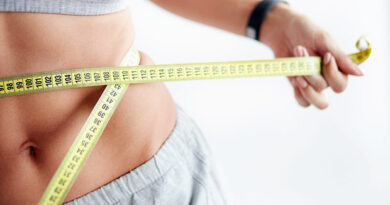The recovery workout that feels better than a massage
It costs a fraction of the price and will leave you feeling just as relaxed.

Photo: iStock
We all know exercising regularly and eating well are essential to maintaining a healthy body. However, how we prepare and help our bodies recover from exercise is incredibly important, too. A hard session can create tiny micro tears within the muscles. These tears may not be so beneficial and turn into things like tendinitis which will hinder your overall performance and setbacks. There are a number of factors that contribute to ensuring your body recovers correctly. These include sleep, hydration, nutrition, allocation of rest days, stretching, deep tissue massage and, of course, recovery exercises.
Foam rolling has become an increasingly popular type of self-massage for muscle recovery, as it allows anyone to experience the benefits of a soft tissue massage at a fraction of the normal cost. However, if you haven’t used one before it can be a little intimidating and confusing. Here are my top tips for foam rolling and how you can integrate it into your next workout.
What is foam rolling?
Foam rolling is a self-massage release technique which is like giving yourself a deep tissue massage. Foam rolling helps loosens tough knots in your muscles and improves circulation and blood flow allowing the muscles to return to normal functioning.
Muscle groups and foam rolling
Foam rolling works particularly well on the larger muscle groups in the legs, back and glutes. Do a quick Google search of the muscles in the area you’re focusing on so you can visualise them. This will help you know where to position the roller, and allow you to properly work out the knots and release the trigger points. For example, if you’re wanting to work on legs, familiarise yourself with your quadriceps, hamstring, calves, IT band and abductors.
Preparing to roll
There are all different kinds and sizes of foam rollers available these days from all good exercise and sport retailers. I’d recommend going instore and having a chat to someone about your requirements to find the roller that best suits you. There are small ones tailored for travel, as well as firmer or softer rollers for different intensity massages. Using a yoga mat can also stop the foam roller from slipping and provide an even surface to work on.
My favourite way to foam roll is to first apply a heating massage oil or lotion (Deep Heat Pro Sports Prep Massage Lotion is a favourite) to the area I’m focusing on. I love using this as it heats up and stimulates blood flow to the area. Once the muscles are warmed up I’ll then grab the roller and work out each area. This technique softens ‘knots’ in muscles, and ensures all the muscles and soft tissue are relaxed.
How to roll
Here are the basic steps to starting to roll:
- Choose the area you want to focus on, and position yourself on top of the roll in that area. Slowly start to roll back and fourth, using as much of your bodyweight as possible. This pressure will then release trigger points and sore spots.
- Find a tight point in the belly of the muscle and relax into it with deep breathing. Rock back and fourth slowly, and stay on the tight spot until the pain and tension releases at least below a 5/10 threshold.
- Aim for 10-20 minutes a day. Try incorporating it into your down time like when you’re watching TV, it’s the perfect way to multitask.
Benefits of foam rolling
Foam rolling is beneficial for your body in so many ways. It aids in muscle recovery by removing lactic acid, decreases overall recovery time and prevents future injuries from happening. It improves mobility and flexibility by stretching and lengthening your muscles. It also saves you a significant amount of money, as it provides the benefits of a deep tissue massage for a fraction of the cost.
Once you start rolling you won’t be able to stop as you’ll see immediate improvements in your ease of movement, posture and mobility. And your body will most certainly thank you for it in the long run.

Former elite gymnast Lauren Hannaford shows you how to master the handstand in just five days.
May 4, 201711:25am




